
 |
Home | Nanga Parbat References | Contact |
Links To Photo Galleries




Links To Photo Galleries




Updated: May 2011. Click on an image to see the FULL size with a caption.
Nanga Parbat, "Naked Mountain" in Urdu, is an immense, dramatic peak situated at the west of the Himalayas just south of the Indus River, with its three faces towering high above the valley floor. To the south, the Rupal Face rises an incredible 4600m above its base. To the north, the complex and very long but somewhat gently sloped Rakhiot Flank rises 7000m from the Indus River valley. To the west, the Diamir Face is the most direct, and now the standard, route.
Nanga Parbat - a symbol to conjure with in the world of mountaineeers and for millions elsewhere, too. That peak of so many names - sometimes called the Fateful Perak, or the Mountain of terror; that cloud-piercing giant which had already devoured 31 victims; that pitiless domain demanding its holocaust and giving nothing in return, luring men into its threall, never to set them free again.
We all knew the history of the huge, lonely, north-western corner-stone of the Himalaya; desperate efforts men had made to pluck its virginity, the devastating drama of the diasters uinfolded on its slopes and ridges. We knew the story of what had been done up in its lofty realm in 1895, 1932, 1934, 1937, 1938 and 1950. And now it was our turn. ...
I couldn't believe, as I stood there, that the mountain could be so brutal. There it stood opposite me, peaceful, transcendently beautiful, with the Silbersattel, the gateway to the summit, shining silver up there. The beauty and grandeur of the scene would permit of no sorrowful mood.
The first attempt on any 8000m mountain was in 1895 when Albert F. Mummery led an expedition to Nanga Parbat. He reached almost 7000m on the Diamir Face, but Mummery and two Gurkha companions later died reconnoitering the Rahkiot Face.
Nanga Parbat became known in the 1930s as the "German peak" with five German expeditions attempting the peak. most using the extremely long North Face route. The German-American Expedition of 1932, led by Willy Merkl, was turned back by excessive snowfall. In 1934, the German Himalayan Expedition led by Willie Merkl, reached a height of 7850m, but Merkl along with three climbers and six Sherpas perished in a blizzard.
The German Expedition of 1937 ended in tragedy when nine Sherpas and seven Germans were hit by an avalanche at Camp 4 when an ice cornice broke away and caused an enormous avalanche, burying the men as they slept. The German press renamed Nanga Parbat the "German mountain of fate". The German Expedition of 1938, led by Paul Bauer, floundered due to lack of Sherpas and bad weather. The Reconnaissance of 1939 explored the Diamir Face with the aim of finding an easier route. This expedition was led by Peter Aufschnaiter and featured Heinrich Harrer, who were arrested at Karachi in September 1939 and went on to Seven years In Tibet fame. In the Winter Escapade of 1950, two young Englishmen died in December 1950 low on the mountain. "The death toll of Nanga Parbat now stood at 14 climbers and 17 porters."
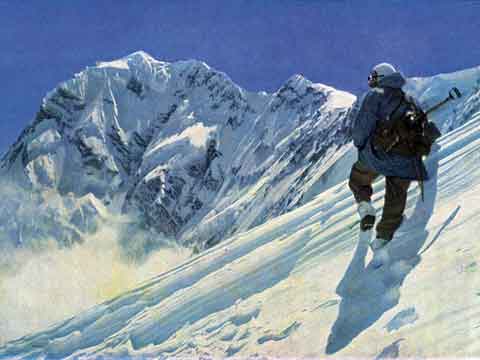
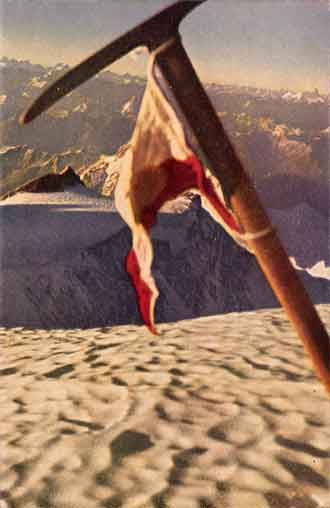
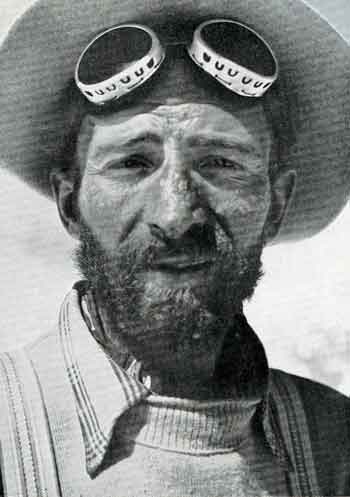
Karl Herigkoffer created and led a 1953 German-Austrian expedition to attempt Nanga Parbat once again vis the long North face route. Despite bad organization, including no Sherpas and many porter problems, Austrian climber Hermann Buhl pushed the camps higher and higher, climbing Rahkiot Peak (7070m) along the way. Despite persistent orders from base camp to abandon their attempt and descend immediately, Buhl, Hans Ertl, Otto Kempter, and Walter Frauenberger firmly refused. Hermann Buhl reached the summit of Nanga Parbat on July 3, 1953 at 7pm.
Fosco Maraini wrote a perfect summary of the ascent in Karakoram: The Ascent Of Gasherbrum IV: "A mountain so savage, a killer of 31 men (14 Europeans and 17 porters), could yield, in the end, only to a splendid folly. The madcap was a little Innsbruck Austrian called Hermann Buhl. Alone, he reached the summit in 1953. He disobeyed the leader’s orders, for 40 hours he forced a passage over ridges and cornices – all the time above 26,000 feet. He kept himself alive, like the maniac he was, on a few tablets. He spent the night crouched in a hole in the ice, like a wild beast. Not only had he no sleeping-bag, he had no special kit; visited by strange hallucination, he just pressed on. His crampons worked loose; no matter, he tied them to his boots with a string. Onwards, upwards! Nothing to drink, nothing to draw on but his own stupendous courage, and blessed by one sole clemency from Fate – forty hours of no wind and no cloud. The giant peak was happy to welcome such a man as her own, and to accord him such glorious privileges."
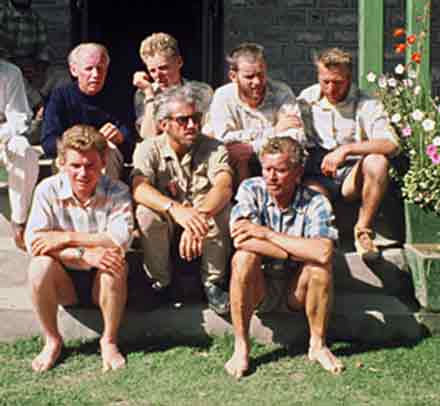
The first ascent of the Diamir face, and the second ascent of Nanga Parbat, was completed on June 22, 1962 at 5pm by Germans Toni Kinshofer, Siegfried Löw, and Anderl Mannhardt on an expedition led once again by Karl Herrligkoffer. This Kinshofer route is now the standard climbing route.
They had to bivouac just 70m below the summit in the extreme cold, and then continued their descent unroped the next morning. Low fell on the descent to the Bazhin Gap. Kinshofer stayed with Low for two days with no sleeping bag or tent. When Low died from his injuries, Kinshofer continued his descent, and suffered several amputations due to the forstbite.
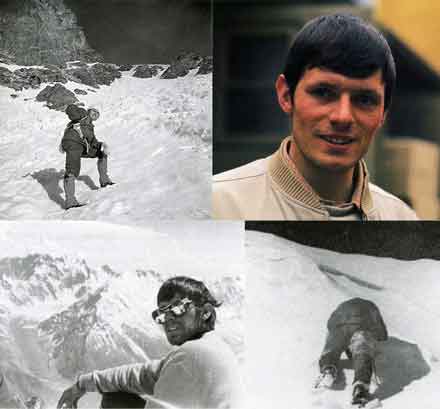
The first ascent of the huge difficult Rupal Face, and the third ascent overall, was made on June 27, 1970 by Reinhold and Günther Messner on an expedition led by Karl Herrligkoffer. "I was quite alone and climbing on top of the world. ... Suddenly I stopped short. Was that someone following me up? ... It was Gunther. ... Suddenly I found myself standing on a final dome of firn snow – the summit of Nanga Parbat. ... Then he followed me up, step by step, and joined me on the top. He took his mittens off and extended a hand towards me. Two cold hands clasped in a brief embrace." - The Naked Mountain: Nanga Parbat by Reinhold Messner.
They were unable to descend their ascent route, and instead made the first traverse of the mountain, going down the Diamir Face. Günther was killed in an avalanche on the descent, with his remains being found below the Diamir Face in 2005. Teammates Peter Scholz and Felix Kuen apparently didn't realize the Messners were in trouble, and passed them, reaching the summit the next day June 28, 1970.
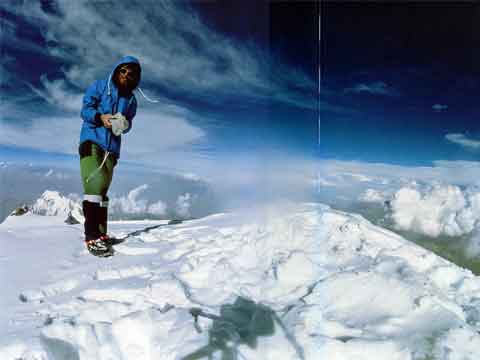
In 1978 Reinhold Messner returned to the Diamir Face and achieved the first completely solo ascent (i.e. always solo above Base Camp) of an 8000m peak, reaching the summit of Nanga Parbat on August 9 1978. Messner left Base Camp on August 6 at noon and bivouaced at the bottom of the Diamir Face. The next day he climbed 1600m in 6 hours and bivouaced at 6400m. He climbed to 7400m for his third bivouac, and left a little late on August 9 for the summit.
Messner finally reached the Nanga Parbat summit on August 9, 1978. "I wander around in a circle, repeatedly looking at the view, as if I can hardly believe I’m really here. It is as if I had no further meaning at all; as if I had crawled out of a sea of loneliness into the safety of the cosmos. ... And the silence urges me to treat the summit very gently. ‘I and the summit are one, yet we are different'." - Solo: Nanga Parbat by Reinhold Messner.